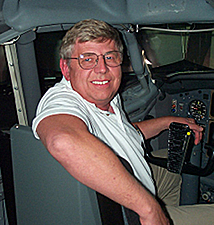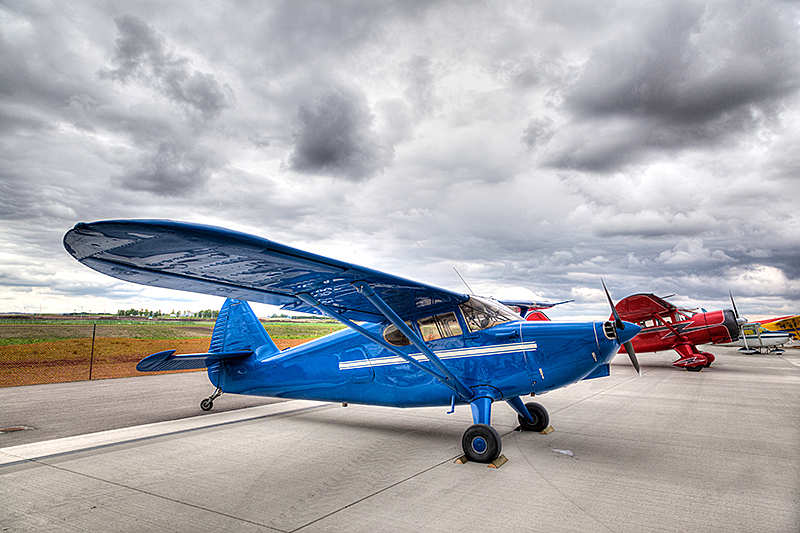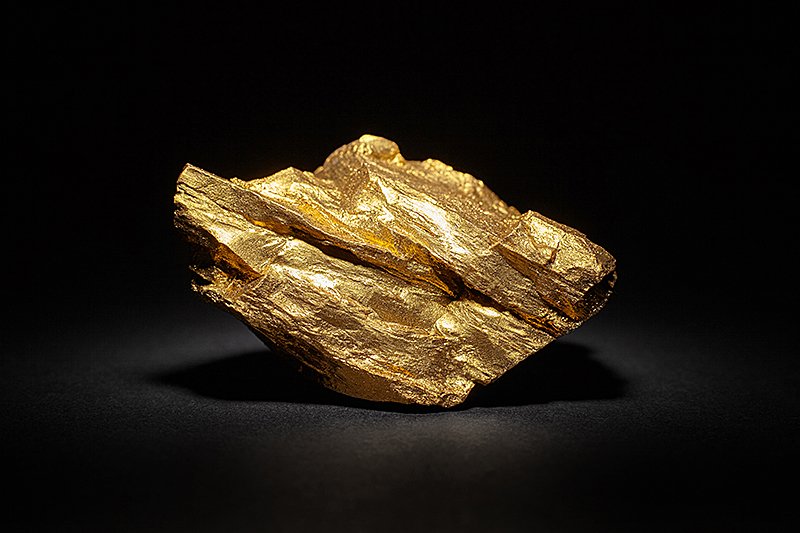Once A Bush Pilot
By Michael J. “Mick” Kaufman
The following is a true story about an Alaskan bush pilot – and it concludes one of the biggest unsolved mysteries in Southwest Wisconsin’s aviation history.
In June 1971, I moved to Richland Center, Wisconsin for a summer job directly out of college in order to get more flight time and experience while working as a new flight instructor. I had a job lined up in the fall to start as a co-pilot on a corporate Gulfstream I aircraft in Milwaukee. However, that job was based on the planned retirement of one of their pilots.
In a twist of fate, I met a special lady and never took that job. After 49 years, I am still in Richland Center and still married to that same lady!
The other day I ran into a friend I had not seen in 20 years. On the same day, I received a newspaper clipping from a friend and former flight student of mine, Richard Aber. The article was about the Alaskan pilot shortage.
I usually write a magazine column on instrument flying and avionics; so, this is a different take on a different aviation subject. Maybe— just maybe — Hollywood will make a movie about this guy. His name was “Joe Cook”.
My wife, Linda, and I were married on April 29, 1972. We were living in a mobile home close to the Richland Center, WI airport. I flew a route every morning picking up blood and pathology specimens for a pathology clinic and I did flight instruction in the afternoon.
On a particular day in June of 1972, we were invited for dinner at my in-laws’. Following dinner, we were watching a Madison TV News broadcast. The big news that night was about an aircraft landing in one of Madison’s parks. Their story was that the pilot, a former Alaskan bush pilot, had landed in the park to give a friend who lived across from the park an airplane ride. The ride went well but upon landing back in the park, the aircraft, a Stinson 10A, struck some trees, causing minor damage to a wingtip.
The distorted news claimed the drunken pilot was walking around the airplane with a liquor bottle waving it at police as he was taken off to jail. The news also claimed that the aircraft landing in the park caused an airliner to abort its landing at the Dane County Airport.
This was how the story started, and I ended up being a friend of Joe Cook. I called the TV news distorted as there was no liquor bottle according to several credible witnesses, and I never knew Joe to drink a drop of alcohol.
Originally, I moved to Richland Center with a friend who was an A&P mechanic and after he went back to college, I invited another friend, Ed Jeschke, to move to Richland Center as there was no mechanic on the field. Ed had worked with me at the Clintonville Airport, where I worked part-time while going to school.
After I told Ed the story about the park-landing in Madison, Ed decided it would be cool to help Joe with the repairs on the Stinson. Joe was a “celebrity” now after all of the news stories.
Ed did some research and was able to contact Joe after his release from jail. The airplane was still in the park in Madison, as no Madison official knew how to handle this situation except Joe.
Joe’s plan, after talking to Ed, was to sneak into the park during the changing of shifts of the police guards and fly it out. The timing was set, and Joe flew the airplane out of the park and headed to Richland Center.
I remember standing by the fence that evening with other pilots and watching the eastern sky for the expected arrival of the Stinson. The challenge was to see who would see it first. When the airplane did arrive, we all had a chance to meet Joe Cook who was to become even more of a celebrity. The airplane was put into a hangar out of site until repairs could be made to the wingtip.
The next day, the news media had a field day as no one had seen the airplane leave the park, and no one knew where it had gone. Joe, knowing he was now in even more trouble, hired the flamboyant Madison attorney and pilot, Jack McManus, to represent him. Joe never received any jail time for this event. Madison officials did not know what to do with this situation, so they involved the FAA.
Joe had an idea that the outcome of this situation would probably lead to a revocation of his pilot’s certificate. Therefore, he encouraged his wife to take flying lessons and thus become a pilot.
I was her flight instructor but, unfortunately, her heart was never into becoming a pilot. I could never get her proficient enough to solo an airplane, and, eventually, she quit her lessons. After a lengthy legal battle, Joe’s pilot’s certificate was permanently revoked. The Stinson airplane was then sold and Joe and his wife got a divorce.
Joe was very talented in mechanics and machinery and worked as a machinist at a Madison machine shop. After Joe’s retirement a year or so later, we had the privilege of seeing Joe at the Richland Center airport on a regular basis. Joe was a soft-spoken man who loved airplanes, and he often reminded me of my own father. Joe did not say much, but if you put a quarter in him and wound him up, he had some great stories about his life as an Alaskan bush pilot.
There was always a bit of a mystery about Joe, but the point that makes this story an unsolved mystery is a “GOLD NUGGET.”
As a pilot in Alaska, Joe had found a gold nugget, and it was not just an ordinary little gold nugget. It was “HUGE.” Joe claimed that it was the second largest privately owned gold nugget in the world, and I could believe it. At the time, the claim was that it was second only to the gold nugget in the Golden Nugget Casino in Las Vegas –and even then, only by a fraction of an ounce.
This was not just a “Joe Cook story,” as I have held Joe’s gold nugget in my hand on numerous occasions and so did many other patrons of the Richland Center Airport. I would describe the nugget as having the diameter of around 4 inches and a length of about 6 inches. I do not remember the exact weight of the nugget, but it was the heaviest item for its size I had ever held. My guess would have been close to 10 pounds.
Joe took his nugget with him wherever he went. He was often asked about it getting stolen and why he did not keep it in a bank vault. His reply was that everyone knew that the nugget was his and if stolen, it could never be sold. If it was melted down, it would be only worth a fraction of what it was worth as a nugget.
Joe had found this nugget in Alaska. I am sure he told us where and when he found it, but I do not remember those details. Joe would carry the nugget in a royal purple-colored drawstring bag and rapped in a purple velvet cloth.
Joe’s love for flying never left him and after his retirement, he would show up at the Richland Airport early in the morning to ride along with me as I made my circuit picking up blood and pathology specimens. I would often let him fly and even make some of the landings.
After returning to the Richland Airport, we would enjoy lunch together at the famous Richland Airport Café. Many of the older pilots in this area may remember the great lunches and breakfasts at the café served by Betty and Hilda. During the lunch and after getting Joe plugged with a quarter and wound up, we would hear bush pilot stories of Alaska.
At one time in his bush-flying career, Joe’s airplane became iced-up in weather and had to make an emergency landing on a glacier. The Gull Winged Stinson Reliant was damaged in the landing. After surviving several days in the frigid cold waiting for a rescue, Joe attempted an aircraft repair and was able to take off from the glacier. Upon attempted landing back in civilization, the repair failed and the airplane ended up crashing.
Some years ago, I read a story about Joe’s Stinson Reliant adventure, but I cannot recall the author. Joe would also talk of his job with the FAA as an operations inspector, but he was clearly not cut any slack for the Madison park-landing incident.
Joe was very frugal with his retirement income and lived in a small apartment in Madison. His only fun and entertainment was visiting his friends at the Richland Center Airport. Joe would never turn down a chance to go flying and after a period of time, he decided to buy an airplane and fly again, pilot certificate or not.
Over the years since we first met Joe, Ed left the Richland Airport for a job with Enstrom Helicopters and we got a new mechanic, Jack Reiser. Jack had been a mechanic with Saudi Arabian Airlines and decided to retire to his home area. Joe and Jack became instant friends and when Joe decided to consider the purchase of a Bellanca Cruisemaster, Jack agreed to help him with the pre-purchase inspection.
Joe and Jack headed to North Carolina on the airlines to inspect and maybe fly the Bellanca home if it were airworthy. Jack was an A&P and an IA as well as an accomplished pilot. A few days later the Bellanca with Joe flying and Jack as the PIC arrived home to the Richland Center Airport on a ferry permit.
The aircraft was in good condition, but the Franklin Engine needed an overhaul. Joe decided to overhaul the engine, but I am not sure if Jack agreed to work with Joe during the overhaul. Joe was very meticulous with the overhaul of the Franklin Engine, but made one mistake which came back to haunt him later. He left a shop rag in the engine when he assembled it, and shortly after the initial start up the engine lost oil pressure. It became obvious to Joe what had happened once he checked the oil screen. Joe made every attempt to clean out the engine of the shop rag and after being satisfied, he started the engine and the oil pressure was again satisfactory.
Friday evening July 29, 1977, Joe was satisfied with the engine operation and taxied the aircraft over to the fuel pump to put some gas in the tanks of the Bellanca. It was a somewhat quiet evening and I was in the airport café drinking a cup of coffee with my friend and fellow pilot, Art Simpson. When I saw Joe at the gas pump filling up the Bellanca, I turned to Art and said “tomorrow morning Joe will take off with that airplane for Oshkosh and kill himself.” I have no idea why I made that comment, but I did.
EAA’s Oshkosh convention was to start on Saturday, July 30 and the Richland Airport was busy with gas sales and pilots stopping for food at the Café. That morning started out with the usual morning valley fog but by 10:00 AM, it was burning off quickly.
I was busy fueling aircraft and had not had much time to think about Joe until one of the transient pilots mentioned there was a fatal airplane crash in neighboring Crawford County. I just got a bad feeling and looked in the parking lot and Joe’s car was parked there. I ran over to Joe’s hangar and opened the door and there was no airplane in it. The bad feeling just got worse, and I ran back to the fuel pump to jot down the N-number of Joe’s Bellanca and then jumped in my car and headed for the local Sheriff’s office.
I knew the Sheriff and all of the deputies and dispatchers at the Sheriff’s office, so I was always welcome at the dispatch center. Mel was on duty at the time and I asked him if he would send a Teletype to Crawford County to see if the aircraft that crashed matched Joe’s N-number. A few minutes later, the Teletype came back saying it was and asked if they had any idea who the dead pilot was as there was no ID, paperwork or aircraft registration on file anywhere.
I left the Sheriff’s office a few hours later as the dispatchers and deputies worked to find Joe’s next of kin. All I remember Joe talking about was a sister that he had little contact with who lived in Madison. I was at the airport early the next morning in time to see a car arrive with Joe’s sister and her son. Joe’s car was a full-sized car, a Mercury Grand Marquis, and all the windows were up and the doors locked.
Joe’s sister was looking for the gold nugget and smashed the window in the car to gain access. Several of us watched while Joe’s sister and her son destroyed the interior of the car and found no nugget. The next day Joe’s sister was back at the airport with a friend and a metal detector and they proceeded to dig up the dirt floor of Joe’s rented hangar. Still, no nugget was to be found at the hangar, the crash site, or in the twisted wreckage of the Bellanca.
For months and even years later, Joe’s sister returned to the airport along with other treasure-seekers; to the best of my knowledge, the nugget has never been found. Either that or whomever found it was not talking.
When I decided to write this story, I did a bit of research on the NTSB website and found the date and accident report from Joe’s crash. The report showed cause of accident as fuel starvation. Joe had filled the aircraft up the night before – and I had the gas record. The report also showed alcohol as a contributing factor. In all of the years which I knew Joe, he never drank a drop. It did show no pilot’s license and no medical, which I agree with. Joe was a very accomplished pilot as I had flown with him many times throughout the years.
A few years later in 1980, a huge gold nugget was found in Australia with a metal detector. It weighed nearly 60 pounds and was purchased by the Golden Nugget Casino for an undisclosed amount in excess of a million dollars. In the years since Joe crashed, there were numerous larger gold nuggets found in Alaska but at today’s gold prices, Joe’s nugget would still bring a small fortune.
Joe was a friend and an accomplished pilot who made a mistake landing in a Madison park to give a simple airplane ride to a friend. If he had done that in Alaska in the 1970s, it would have been a non-event. My take on the fatal accident was an engine failure above a fog bank.
The gold nugget has never been found — or if someone did find it, they never talked. This will always be one of Southwest Wisconsin’s best aviation mysteries.
Till the next issue of Captain’s Corner, Fly Safe!
Mick






